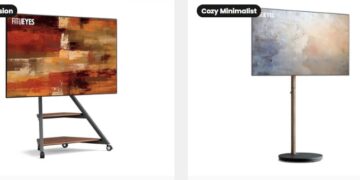In the world of fast fashion, everything needs to be changed within a week, if not days. The designs and style of each cloth item and with the consumer data a brand needs to come up with new designs.
RFID is one such technology through which a brand can identify old stocks and track the new ones that are selling the most. Consumer data is important for the brand, and RFID is again the technology that can provide that in real time.
Zara’s use of RFID and its positive implication in the business is something to look after. The use of inventory tracking of RFID is again one such feature that helps the company to understanmd the stocks they have and calculate the inventory loss or profits.
1. How the Use of RFID Coincides With Zara’s Business Model
The fast-fashion industry welcomes Zara, a brand of Inditex. Fast-fashion operators use their fast production systems to distribute new collections, which arrive at stores every few weeks according to current fashion trends. Zara requires a flexible supply chain that allows products to travel swiftly and in appropriate quantities to their stores.
The extensive Zara retail locations, coupled with fast product flow, made traditional inventory systems unable to align with actual marketplace requirement patterns. RFID technology improved these organizations’ product tracking and supply chain management capabilities.
2. The Work and Role of RFID
Radio Frequency Identification (RFID) technology tracks objects through wireless radio waves that read RFID tags. The ability to read RFID tags remotely, combined with their bulk reading abilities, makes them different from barcodes since they need to be scanned directly. Inventory management experiences significant transformation through RFID due to its ability to give instant stock visibility across stores along with their product positions and movement paths.
3. How Zara Implemented RFID
The implementation of RFID by Zara commenced in 2014 when the company launched the technology at flagship stores before extending its usage throughout their worldwide stores. The security label of each product incorporates an RFID tag, which manufacturers embed within the clothing items. With this implementation Zara monitors items starting from their production facility exit all the way to their destination on retail store flooring.
Benefits of Implementation
By adopting the technology, Zara has benefitted in several ways, including increased efficiency and reduced operational costs, which have reflected in the company’s bottom line.
· Increases Inventory Accuracy
Implementing RFID systems leads to the most crucial advantage of achieving better inventory accuracy. Zara relied on human-driven manual stock counts before RFID implementation but encountered mistakes due to human error.
Zara reached nearly flawless inventory accuracy through RFID because this technology reveals instant automated status updates about product inventory. The system keeps Zara constantly informed about the total inventory and its current distribution locations.
· Enhances the Store Operations
The use of an RFID warehouse is the only solution to increasing the store’s efficiency. It helps the company restock items quickly and also frees the employees to check on items manually. Therefore, they are more inclined to provide the right customer service to the attendees. These are some of the main benefits Zara has derived from implementing RFID technology in its retail outlets and warehouse facilities.




























